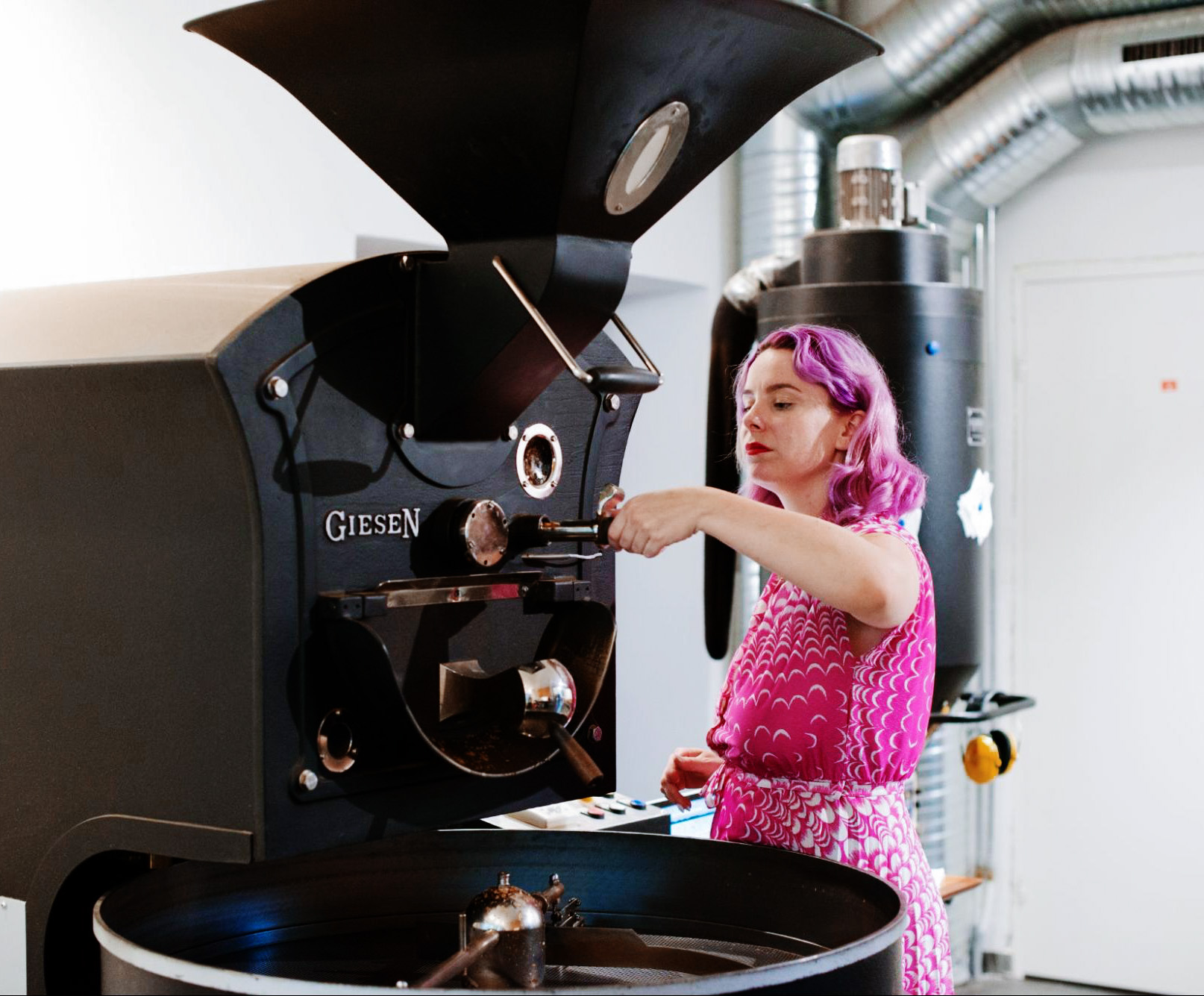Indirectly heated drum roasters, fixed-drum roasters, and fluid-bed roasters operate quite differently from one another, but all have one important feature in common: the machines exclusively use hot air as the heat source. As a result, these roasters share some common characteristics.
In all three types of air roasters, nearly all the heat transfer to the beans takes place via convection. Nonetheless, there is also a limited amount of conduction from the walls of the roasting chamber.
Working with convection requires a unique approach to coffee roasting. The airflow and heat transfer are closely linked, and the heat energy stored in the drum becomes much less important to the roast. To get insights into the technique of air roasting, we asked three roasters who work with three different styles of machines to share their expertise with us.
Talor Browne is the founder of Talormade, a specialty coffee roastery and doughnut bakery with three shops in Oslo, Norway. Talor previously used drum roasters from Probat and Diedrich, but for Talormade she chose to install a Loring S15 Falcon, a fixed-drum roaster. In 2015, Talor conducted one of the few published attempts to directly compare different roasters for specialty coffee.
 Talor Browne, the founder of Talormade, roasting on a Giesen drum roaster as part of her research into different roaster designs
Talor Browne, the founder of Talormade, roasting on a Giesen drum roaster as part of her research into different roaster designs
Renata Henderson is the head roaster at Cxffeeblack in Memphis, Tennessee, which she cofounded with her husband Bartholomew Jones. Cxffeeblack is a social enterprise set up with the intention to reconnect the Black community with the Black history of coffee and to create more opportunities in the industry for people of colour. Renata roasts on an Artisan X-e — a small fluid-bed roaster with a partially open roasting chamber.
 Bartholomew Jones and Renata Henderson, cofounders of Cxffeeblack
Bartholomew Jones and Renata Henderson, cofounders of Cxffeeblack
Jorge Verdú Añón is the head roaster at Cafes El Magnifico, a company established in Barcelona, Spain, in the 1960s that later became a pioneer of specialty coffee in the country. He is the cofounder of Orbita, a coffee brand focused exclusively on single-origin coffees, which operates from the same roastery. Jorge uses indirectly heated drum roasters made by Vittoria (now known as Bottoni); one 15-kilo and the other 30-kilo in capacity.
Air roasters require an approach different from that used for drum roasters, Jorge has found. ‘A lot of things that apply to directly heated machines don’t apply to ours,’ he says. ‘It was really frustrating for me in the beginning, because you can’t compare with what other people are doing.’
As an example, Jorge describes working with Scott Rao to develop the roast profile of a Kenyan coffee. Rao normally recommends not changing the burner power close to first crack, but Jorge found this didn’t apply to his machine. ‘I can increase the burner power before first crack to avoid a crash and develop the coffee properly, and when I cup it there’s no sign of roastiness. Rao said to me that if you do that in a Probat, you get roasty flavours, even if the shape of the RoR curve is perfect.’
Jorge Verdú Añón using the Vittoria indirectly-heated drum roaster at Cafes El Magnifico
According to Jorge, part of the reason for the difference is that the drum of an indirectly heated roaster stores less heat energy. ‘You can respond more quickly to changes,’ he says. ‘You have less inertia — which can be good or bad, depending on the situation … it can be less consistent when you need to roast a lot of batches back to back.’
For Renata, the quick response to changes is one of the main advantages of the fluid-bed roaster she uses at Cxffeeblack, compared with drum roasters she used in the past. ‘It’s definitely more responsive, and I understand the science behind it better. I feel like I’m very active in the process — and it makes it more exciting to roast,’ she says.
The large thermal mass of a traditional drum roaster creates a stable roasting environment, but the protocols needed to manage heat in the drum dictate the roasting schedule and limit flexibility, according to Talor. ‘You can get delicious, sweet coffees on a Probat, but you’re tied to the machine,’ she says. She found that the thinner drum and powerful burners of the Diedrich made it more responsive to changes but created a risk of scorching the beans.
With air roasters, on the other hand, defects related to bean-surface burning are less common. ‘It’s difficult to f— up the coffee with this kind of machine — I never had any scorching or tipping,’ Jorge says. ‘It’s easier to have a pretty good roast.’

